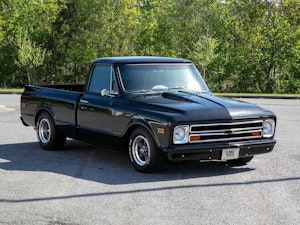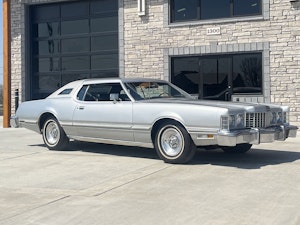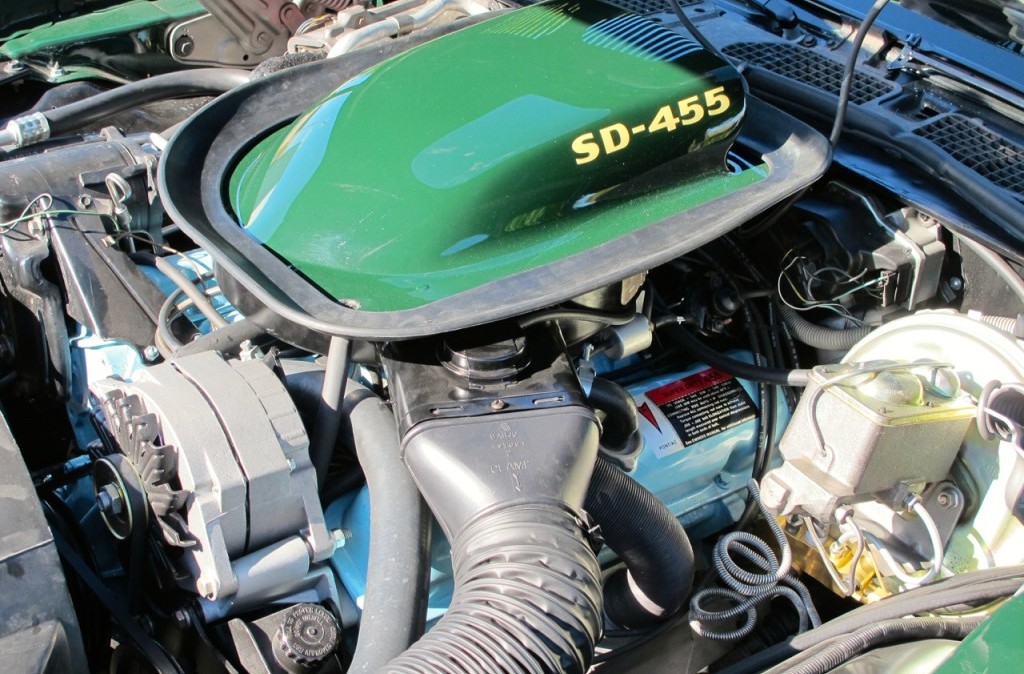Media | Articles
How Super Duty turned Pontiac into a performance icon
In 1956, Semom Emil “Bunkie” Knudsen rose to the position of general manager at General Motors’ then-struggling Pontiac. His long-term plan was to revamp the division’s stodgy image into one with more youthful appeal. “You can sell a young man’s car to an old man, but you can’t sell an old man’s car to a young man,” he said. The Super Duty program was a major part of Knudsen’s strategy.
Knudsen’s marching orders allotted him five years to turn the division around. He started by instituting design changes in 1957, which included removing the “suspenders” from the Chieftain’s hood, as well as scrapping the trademark Pontiac silver arrow from the Bonneville. By the end of the ‘50s, Pontiac’s now-iconic split-grille beak had spread across the model range, and its torquey V-8 had grown to 389 cubic inches. Pontiac had also become a name to be reckoned with on the NASCAR circuit.
As Pontiac cruised into the early 1960s, the “Win on Sunday sell on Monday” sentiment was strong at Pontiac, even as the Automobile Manufacturers Association’s 1957 ban on factory-supported racing was technically in effect. If success was measured in wins at the race track, Pontiac was the manufacturer to beat in this era. Its venerable Super Duty program was the driving force behind the brand’s on-track success, both in NASCAR and later in the National Hot Rod Association (NHRA).
Even as Knudsen moved to Chevrolet in 1961, Pontiac redesigned the Catalina that year, lending it a lower and leaner stance, and in 1962 it received a new roofline. Pontiac also increased the displacement of the 389 to 421 cu in. These refinements laid down the framework for a well-rounded race car for the oval track and quarter-mile alike, and it was an investment in the brand’s continued racing credibility.
Up to this point, certain forms of racing required that a particular part have a factory-assigned part number for it to be legal for competition. This resulted in aftermarket high-performance parts being given manufacturer part numbers to meet the rules of those governing bodies. The NHRA then revised its 1962 ruling for certain stock classes, requiring such components to not only carry a manufacturer’s part number, but had to be factory-installed as well.
Marketplace
Buy and sell classics with confidence

In response, Pontiac officially listed its Super Duty 421 V-8 as an expensive, limited option on the Pontiac Catalina and Grand Prix in 1961. This particular motor was factory rated for 405 hp @ 5600 rpm, but actual output was rumored to be closer to 460 hp. Torque was rumored to be equally underrated at 425 lb-ft @ 4400 rpm. The Super Duty motors featured a cast iron block that was reinforced with four-bolt mains, forged steel rods and crankshaft. Mickey Thompson forged aluminum pistons stuffed the engine bores, and a solid lifter McKeller #10 camshaft orchestrated the combustion. SD specification came topped with two four-barrel carburetors on a high-flow aluminum intake that breathed through high compression (11:1) big-valve “NASCAR” heads and streamlined cast split-flow, dual outlet exhaust headers with cast iron exhaust cutouts. With this kind of aggressive setup there was no doubt what the intended use for the powerplant was.
To further enhance the performance nature of the Catalina, Pontiac engineers put the car on a diet for 1962. First, all sealer material, sound deadener, and insulation was removed from the body. The radio and heater were also eliminated. Steel components such as the hood, fenders, inner fenders, radiator support, bumpers and all related bracing for these structures were replaced with stamped aluminum factory produced parts. The aluminum front end trimmed 200 pounds from the stock Catalina, which typically weighed in at 3500 pounds. Outwardly, these cars looked no different than a regular Catalina; the only hint to their brutish intended usage were eight-lug Pontiac wheels.

For 1963, Pontiac wanted to build further on its NHRA presence in the Super/Stock class. Even with the lightened front end, the Catalina was still too heavy for the lightweight Chevrolets and Mopars. Pontiac engineers rolled up their sleeves and created an ultra-lightweight “Swiss Cheese” frame for the Catalina. Designed specifically for racing, it had holes drilled in the frame rails and the lower portion of the bottom frame rail was removed. Needless to say the frame was not very stiff, which meant the body shell contributed to the bulk of the torsional and beam stiffness of the overall car structure. And these modification did nothing to control body squeaks and rattles or door fitment. The aluminum stamping for 1963 were also a thinner gauge, which provided a 10- to 20-percent lighter front clip. But the panels were so thin you could probably dent them with a hard press of our thumb. The standard exhausts were replaced with aluminum versions of the split flow, dual-outlet manifolds which weighed 27 pounds, compared to 72 pounds in cast iron. Further weight reductions were available with dealer-installed Plexiglas windshield and rear windows, which were around 40 pounds lighter. More weight came off in the driveline thanks to an all-aluminum transmission case which netted another 20 to 25-pound savings over the cast iron units. As a final touch, special thin front cast iron brake drums saved a few more pounds up front. The engine remained essentially the same with some improvements to head ports and bumping the compression to 12:1.
Even the Catalina’s suspension came prepped for the strip. For optimum weight transfer on launch, rear coil springs were softer than standard and the front springs were stiffer to allow the body to settle back coming off the line. To further enhance the squat, the vehicle came with special front shocks with zero rebound control (damping) and rear shocks with no compression control. The combination worked perfectly to prevent excessive pitching and bouncing of the body at high speeds, allowing the Super Duty Catalina to essentially jump off the line. The factory pulled out all the stops to help put the buyer in the winner’s circle, fresh off the dealership floor. In fact, some Pontiac dealers sold drag tires in their parts department to further facilitate one-stop shopping before you hit the track; the full package could be had in 1963 for just under $4000.

Nevertheless, the program hit a critical roadblock. Notorious penny-pincher GM chairman and CEO Frederick Donner issued a memo in January of 1963 to all divisions, reaffirming its position within the Automotive Manufacturers Association (AMA) agreement against factory-supported racing. According to Martyn Schorr’s Day One: An Automotive Journalist’s Muscle-Car Memoir, Pontiac quickly instructed dealers to reject orders for 421SD models. It appeared GM and most notably Pontiac’s reign in racing was over, even as some undercover performance operations pressed on. Without racing to substantiate their performance image, Pontiac’s new-found youthful image was in peril. It certainly looked like it could be the end for Pontiac’s high-octane run, and an unceremonious end to one of the best brand re-tools in history.
Pontiac had, however, awakened a performance beast in the American automotive market that it could feed. What Pontiac engineers learned on the 421SD program they quickly funneled into their 421HO (High Output) street motor. A new vehicle concept based on a mid-sized body with a large-displacement engine was born in a Pontiac experimental garage at the GM Proving Grounds in Milford. Moving the 421HO into the Tempest, a smaller and lighter intermediate body seemed like the natural progression from the Super Duty Catalina.


But Pontiac engineers were still bound by yet another GM edict mandating 10 pounds of vehicle weight per cubic inch. Pontiac discovered that the limit only applied to base engines and not option packages, and so engineers developed a 389 using the high-performance parts from the 421HO. Thus, a new era was born in 1964 with the GTO option package to be offered on the LeMans. With the GTO, Pontiac’s performance image was launched into infamy, solidifying the division in history as the father of the muscle car era. The SD badge would return in future, most notably with the legendary Firebird Trans Am SD-455. Pontiac may today be gone, but it certainly is not forgotten.

















